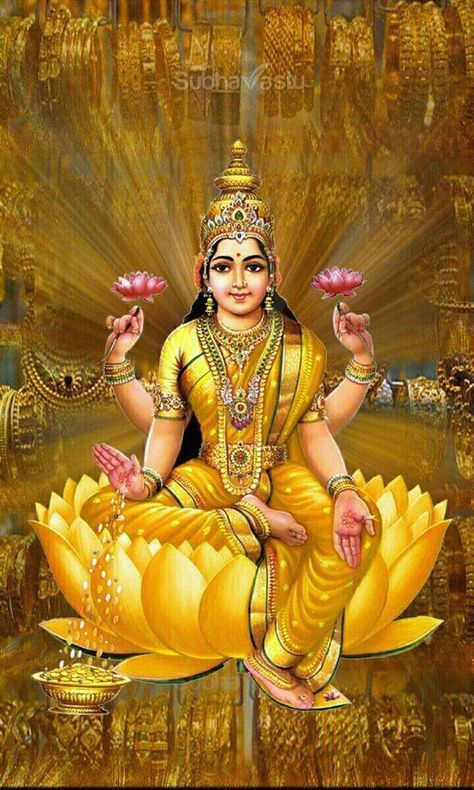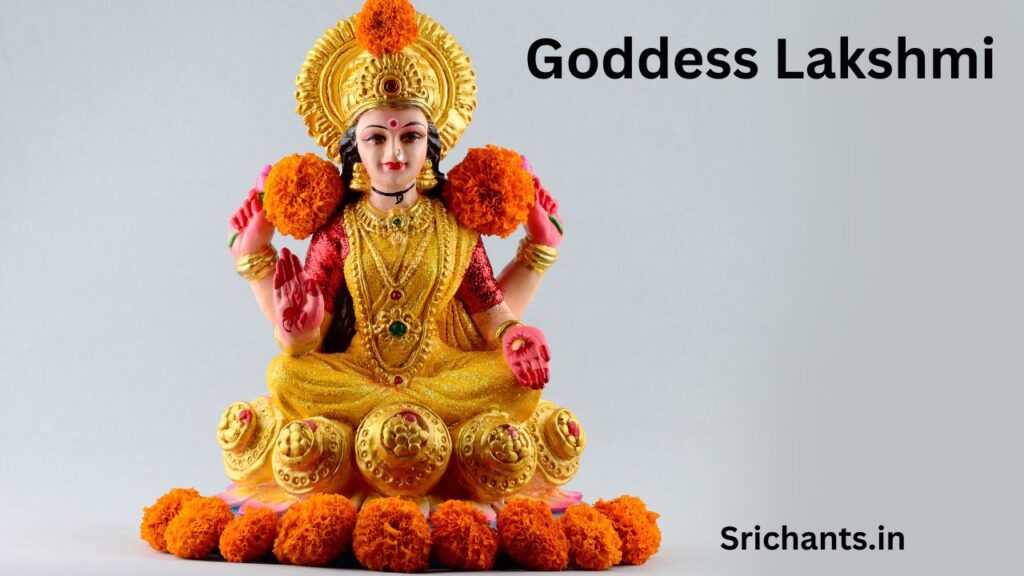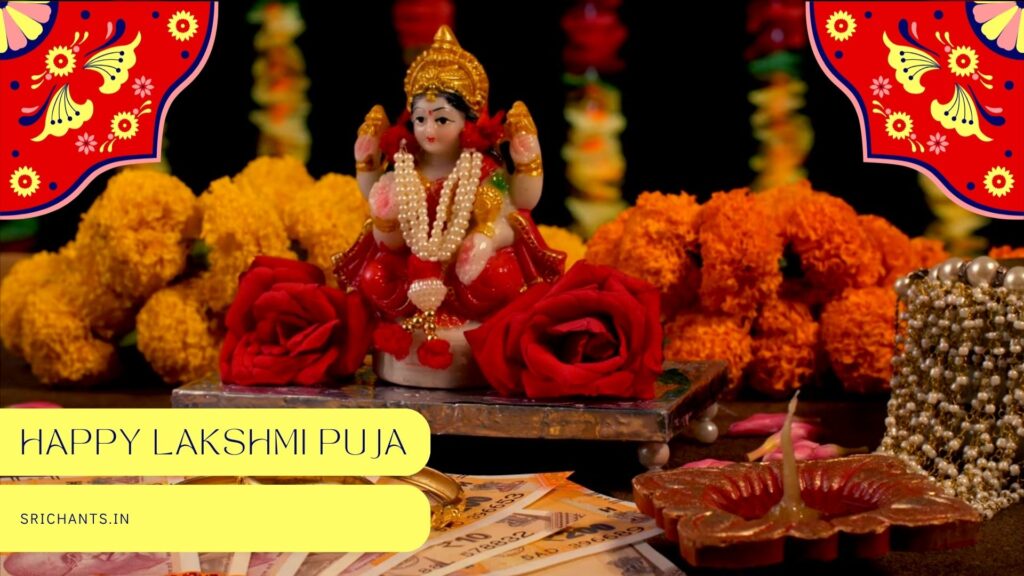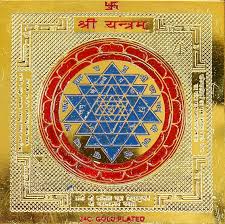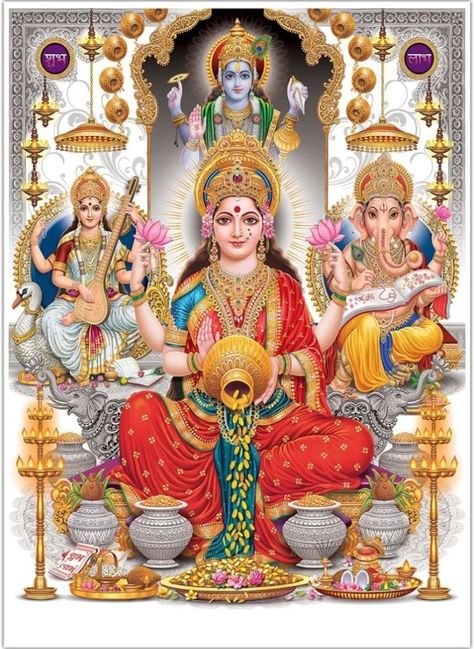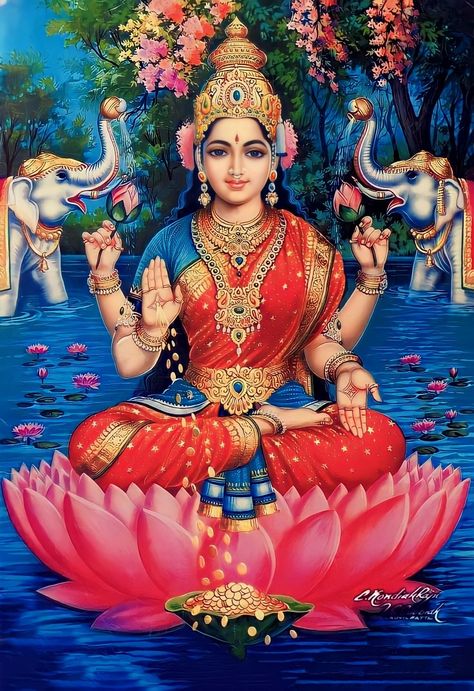Goddess Lakshmi Stories : Legends, Lore, and Devotion
Introduction
Lakshmi, the sacred consort of Lord Vishnu, is one of the most cherished and revered goddesses in the Hindu pantheon. Lakshmi’s captivating narratives have captivated devotees for centuries, inspiring them to pursue her blessings and emulate her virtues as the embodiment of wealth, prosperity, and good fortune. In this thorough examination, we delve into the captivating legends and stories that have influenced the enduring legacy of the Goddess of Abundance.
The Churning of the Cosmic Ocean
The epic conflict between the gods and the demons for the elixir of immortality is recounted in the Churning of the Cosmic Ocean, one of the most celebrated tales in Hindu mythology. The rebirth of Goddess Lakshmi, who had previously abandoned the universe due to Indra’s arrogance, is at the core of this cosmic churning. Lakshmi, standing atop a magnificent lotus flower, emerged as the gods and demons worked tirelessly to churn the ocean. Her radiant beauty and benevolent presence restored the gods’ fortunes and enabled them to vanquish their demonic adversaries.

The Significance of the Lotus Flower
In Hindu tradition, the sacrosanct lotus flower, which is frequently depicted as Lakshmi, is of great symbolic significance. The lotus, a plant that flourishes in the murky waters yet blossoms with purity and grace, symbolizes Lakshmi’s capacity to bestow prosperity and enlightenment in the presence of adversity. This imagery emphasizes the idea that genuine riches and success can only be achieved through selfless service and unwavering virtue.
The Churning’s Enduring Lessons
Lakshmi’s rebirth is recounted in The Churning of the Cosmic Ocean, which also imparts valuable teachings on the significance of humility and the nature of success. The narrative serves as a reminder that prosperity and good fortune are not to be taken for granted, and that their rapid demise can be precipitated by arrogance and complacency. It also underscores the synergistic collaboration between the divine and mortal realms and the power of collective endeavor.
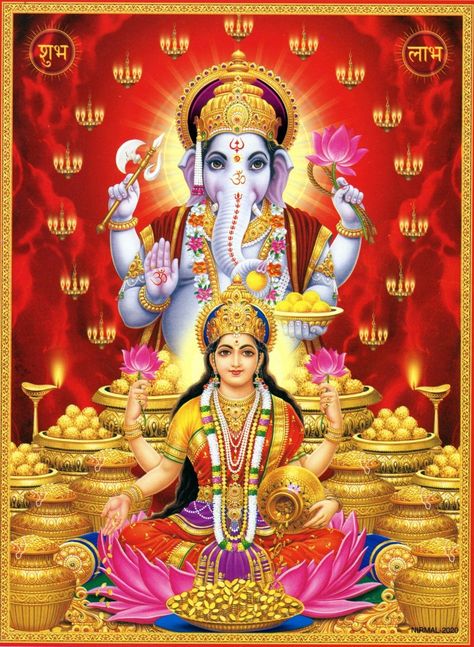
The Epic of Ramayana and Lakshmi’s Incarnation
Sita, the virtuous and devoted wife of Lord Rama, is believed to have been the incarnation of Goddess Lakshmi in the renowned Hindu epic Ramayana. The narrative of Rama’s exile, Sita’s abduction by the demon king Ravana, and Rama’s ultimate victory over evil serves as a testament to Lakshmi’s unwavering support and the triumph of righteousness over darkness.
Lakshmi’s Manifestation as Sita
Sita’s identification as an incarnation of Lakshmi emphasizes the goddess’s status as the quintessential embodiment of purity, devotion, and the ideal companion to the divine. Lakshmi’s own rebirth and the restoration of divine order are paralleled by Sita’s unwavering loyalty to Rama, her graceful acceptance of adversity, and her eventual rescue and restoration to the monarchy.
The Festival of Diwali and Lakshmi’s Homecoming
Lakshmi is also closely associated with the festival of Diwali, which commemorates Rama’s triumphant return to his dominion. On this auspicious occasion, Hindus light candles and lamps to direct Lakshmi’s path, appealing to her to grace their homes and bestow her divine gifts of prosperity and well-being.
Lakshmi’s Manifestations and Iconography
Goddess Lakshmi is frequently depicted in a variety of forms, each of which represents a unique aspect of her multifaceted nature.
The Four-Armed Lakshmi
The most prevalent depiction of Lakshmi is as a beautiful woman with four limbs, either standing or seated on a lotus flower. Her four limbs represent the four objectives of human existence: moksha (liberation), artha (wealth), kama (desire), and dharma (righteousness). She is frequently depicted holding a lotus flower, a pot of gold, a garland of flowers, and a book or scroll, which symbolize her bounties of spiritual enlightenment, knowledge, fertility, and prosperity.
Lakshmi’s Elephant Attendants
Lakshmi is frequently accompanied by one or more elephants, which represent the capacity to surmount challenges, royalty, and fortitude. The deity is believed to be anointed with sacred waters by these elephant figures, which further strengthens her connection to the natural world and the abundance it offers.
Lakshmi’s Diverse Manifestations
Lakshmi is revered in a variety of other manifestations, each of which possesses its own distinctive attributes and significance, in addition to her primary form. These include Mahalakshmi, the deity’s supreme form; Annapurna, the goddess of sustenance and nourishment; and Vidya Lakshmi, the embodiment of knowledge and wisdom.
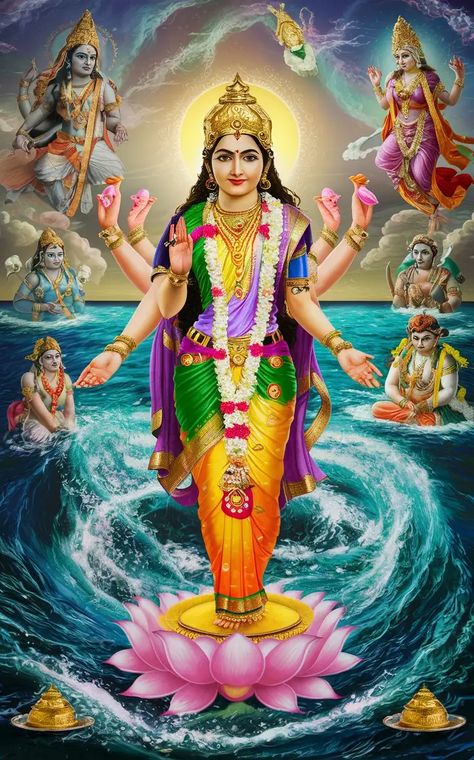
Lakshmi’s Worship and Rituals
Numerous rituals and festivals are dedicated to Goddess Lakshmi, who is revered and venerated throughout the Hindu world.
The Significance of Diwali
The most significant occasion for Lakshmi’s veneration is the annual festival of Diwali. Hindus during this period perform a variety of rituals, including the cleaning and decoration of their homes, the lighting of lamps, and the recitation of prayers to the deity in order to obtain her blessings for prosperity and well-being.
Daily and Weekly Worship
Hindus also integrate Lakshmi’s worship into their daily and weekly rituals. Devotees frequently recite mantras, make offerings, and perform rituals to invoke the divine grace of Lakshmi, as Friday is considered an auspicious day for Lakshmi puja.
Lakshmi’s Presence in the Home
Many Hindus maintain shrines or altars dedicated to the deity, as Lakshmi is also considered essential within the household. Devotees frequently present flowers, incense, and other offerings to invoke Lakshmi’s blessings in these sacrosanct spaces, which are frequently adorned with images, statues, or paintings of her.
Lakshmi’s Blessings and the Pursuit of Wealth
The goddess Lakshmi is highly regarded for her capacity to provide her devotees with material prosperity, financial abundance, and overall well-being. In Hindu tradition, the pursuit of wealth and accomplishment is not without its limitations.
The Importance of Virtue and Sincerity
According to Hindu belief, the pursuit of Lakshmi’s blessings should not be motivated by avarice or selfishness, but rather by sincere devotion, righteous behavior, and a genuine desire to elevate oneself and one’s community. It is believed that the goddess resides in regions where hard labor, virtue, and bravery are readily apparent, and she is known to withhold her favor from those who become arrogant or complacent.
The Balance of Wealth and Spirituality
Hinduism underscores the significance of maintaining a harmonious equilibrium between the cultivation of spiritual development and the pursuit of material prosperity. Lakshmi’s worship is not solely about the accumulation of wealth; rather, it is about the alignment of one’s actions with the principles of dharma and the utilization of one’s resources to promote spiritual enlightenment and benefit society.
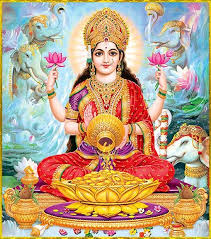
Lakshmi’s Universal Significance
Goddess Lakshmi’s appeal goes beyond the confines of Hinduism, and her influence is evident in a variety of cultural and religious traditions worldwide.
Lakshmi’s Presence in Other Faiths
Although Hinduism is the primary religion in which Lakshmi is revered, her attributes and iconography have resonated with other belief systems. For example, the goddess’ portrayal as a beneficent, life-giving figure has been echoed in the goddesses of various pagan and indigenous traditions, while her association with prosperity and abundance has drawn parallels with the Virgin Mary in Christianity.
Lakshmi’s Global Reach and Relevance
The ubiquitous appeal of Lakshmi’s teachings and the timeless wisdom that is ingrained in her narratives have established her as a revered figure on a global scale. Her stories continue to inspire devotees, scholars, and seekers equally, who discover a profound reflection of the human experience and the eternal pursuit of spiritual fulfillment, abundance, and harmony in her enduring legacy.
Conclusion
Goddess Lakshmi’s status as one of the most adored and influential deities in the pantheon has been solidified by her enduring presence in Hindu tradition and captivating tales. Lakshmi’s narratives have transfixed generations of devotees, imparting immutable lessons on the transformative power of righteous action, the significance of humility, and the nature of prosperity, from her dramatic rebirth in the Churning of the Cosmic Ocean to her incarnation as the virtuous Sita.
The multifaceted goddess of Lakshmi, whose blessings extend far beyond material affluence, is revealed as we further explore the rich tapestry of her legends and iconography. These blessings encompass the realms of knowledge, spiritual enlightenment, and the harmonious balance between the material and the divine. The genuine substance of prosperity and fulfillment can be unlocked in this life and the next by adopting Lakshmi’s teachings and imitating her virtues.
#lakshmi #lotus #ocean #legends
